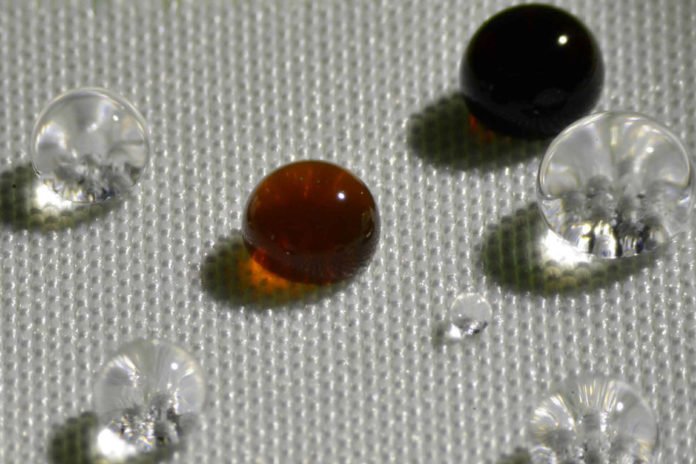MIT scientists have developed a coating that adds water-repellency to natural fabrics such as cotton and silk. It is also more effective than the existing coatings. It is believed that the technology could benefit many fabrics. There’s a lot of potential here.
MIT professor Kripa Varanasi said, “The challenge has been driven by the environmental regulators” because of the phaseout of the existing waterproofing chemicals.”
“Most fabrics that say ‘water-repellent’ are water-resistant. If you’re standing out in the rain, eventually, water will get through. Ultimately, the goal is to be repellent — to have the drops just bounce back. The new coating comes closer to that goal.”
On account of the way they collect in nature and body tissue, the EPA is reconsidering controls on the long-chain polymers that have been the business standard for a considerable length of time.
Current coatings make fabrics water-repellent, consisting of long polymers with perfluorinated side chains. The trouble is, that shorter-chain polymers that have been studied do not have as much of a water-repelling (or hydrophobic) effect as the longer-chain versions. In addition, they are liquid-based, so the fabric has to be immersed in the liquid and then dried out. This they requires a manufacturing step in which air is blown through the fabric to reopen those pores.
For this technology, scientists combine two things: a shorter-chain polymer that, by itself, confers some hydrophobic properties and has been enhanced with some extra chemical processing and a different coating process called initiated chemical vapor deposition (iCVD).
Utilizing the iCVD covering process, which does not include any liquids and should be possible at low temperatures, creates a thin, uniform covering that takes after the forms of the filaments and does not prompt any stopping up of the pores; in this way, dispensing with the requirement for the second handling stage to revive the pores. At that point, an extra advance, sandblasting of the surface, can be added as a discretionary procedure to build the water repellency significantly more.
MIT postdoc Dan Soto said, “The biggest challenge was finding the sweet spot where performance, durability, and iCVD compatibility could work together and deliver the best performance.”
Varanasi said, “The process works on many different kinds of fabrics, including cotton, nylon, and linen, and even on nonfabric materials such as paper, opening up various potential applications. The system has been tested on different types of fabric, as well as on different weave patterns of those fabrics. Many fabrics can benefit from this technology. There’s a lot of potential here.”
The covered fabrics have been subjected to a barrage of tests in the lab, including a standard rain test utilized by the industry. The materials have been besieged with water as well as with different fluids including espresso, ketchup, sodium hydroxide, and different acids and bases — and have repulsed every one of them well.
The new findings are described in the journal Advanced Functional Materials in a paper by MIT professors Kripa Varanasi and Karen Gleason, former MIT postdoc Dan Soto, and two others.
The team, which also includes former postdoc Asli Ugur and Taylor Farnham ’14, SM ’16, plans to continue working on optimizing the chemical formula for the best possible water-repellency and hopes to license the patent-pending technology to existing fabric and clothing companies. The work was supported by MIT’s Deshpande Center for Technological Innovation.
